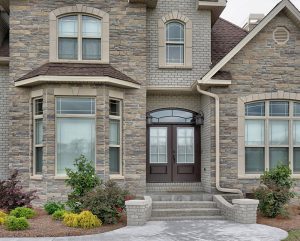Cast Stone Mantels Are the Smartest Choice for Today’s Fireplaces
A fireplace mantel often serves as the centerpiece of a living space, combining aesthetic appeal with functional value. Among the many materials available—wood, metal, and natural stone—cast stone has quickly become a top choice for homeowners and designers alike. Its growing popularity stems from its ability to offer the elegance of natural stone while providing enhanced durability, affordability, and design flexibility.
Cast stone is an architectural precast material designed to replicate the look and feel of natural cut stone. Made by combining crushed natural aggregates, cement, and color pigments, cast stone is poured into molds to create intricate shapes and textures. This process allows it to mimic high-end stone finishes while remaining more cost-effective and easier to work with, making it a practical solution for a wide range of mantel designs.
Durability is one of the most important factors in choosing a mantel material, especially in high-heat areas. Cast stone excels in this regard. Unlike marble or limestone, which can chip or erode, cast stone is engineered to endure heat, moisture, and wear without compromising its structural integrity. It doesn’t crack or warp under fireplace temperatures and requires only minimal maintenance to retain its beauty—often just a simple wipe with a damp cloth. This resilience makes it a smart long-term investment for homeowners.
The aesthetic versatility of cast stone is another standout feature. It can be crafted into nearly any shape, from classic and ornate to sleek and modern. This customization is difficult to achieve with natural stone due to its carving limitations and cost. Cast stone mantels can also be finished to resemble a variety of stones—limestone, travertine, sandstone, and more—giving homeowners the freedom to match their interior style without being confined by nature’s limitations.
Cost is often a deciding factor in home improvement decisions, and here, too, cast stone stands out. Since it is manufactured rather than quarried, cast stone tends to be significantly less expensive than natural stone. Its lighter weight also reduces labor costs and eliminates the need for extensive structural reinforcement, which is often required when installing heavier natural stone mantels. The result is a product that delivers high-end visual impact without the high-end price tag.
For those concerned about environmental sustainability, cast stone offers some green benefits as well. Its production process can incorporate recycled materials, reducing waste and making it an eco-friendly option. Additionally, manufacturing cast stone typically requires less energy than extracting, transporting, and processing quarried stone, further contributing to its environmental appeal.
Compared to other mantel materials, cast stone consistently outperforms in safety and practicality. Wood mantels, while traditional and charming, are flammable and susceptible to warping, cracking, and insect damage. Cast stone, being non-combustible and resistant to environmental degradation, is a safer and more durable alternative. When placed alongside metal mantels, cast stone offers better heat dispersion and a broader design range. Metal can become dangerously hot, whereas cast stone maintains a gentle warmth and invites more decorative creativity. Even when compared to natural stone, cast stone holds its own—offering the same refined look at a fraction of the cost and weight.
Design flexibility is a defining advantage of cast stone. It can easily replicate historic architectural styles or complement cutting-edge modern design, giving homeowners the opportunity to express their personal taste or match a home’s character. From grand, traditional profiles with keystones and corbels to clean, minimal lines suited for contemporary spaces, cast stone adapts effortlessly.
The installation process also benefits from cast stone’s lighter weight. This makes it easier to handle and install, especially in renovation projects where structural limitations may exist. Because it doesn’t require as much support as heavier materials, it allows for faster, more cost-efficient construction and provides flexibility in placement and customization.
Lastly, cast stone offers strong resistance to the environmental factors that can affect mantels over time. It is less porous than many natural stones, making it better suited to withstand exposure to soot, smoke, and moisture. This resistance helps preserve both its appearance and integrity in homes with active fireplaces. Because it is produced in controlled environments, each piece of cast stone is consistent in quality, color, and texture—ensuring a reliable result every time.
In conclusion, cast stone combines beauty, strength, and versatility in a way that few other mantel materials can match. It offers homeowners the look of luxurious natural stone without the drawbacks of high cost, weight, or fragility. Its ability to be customized, its environmentally conscious production, and its practical performance make it an excellent choice for anyone looking to add timeless elegance and functionality to their home’s hearth. Whether your design vision is classic or contemporary, cast stone provides the perfect balance of form and function.
